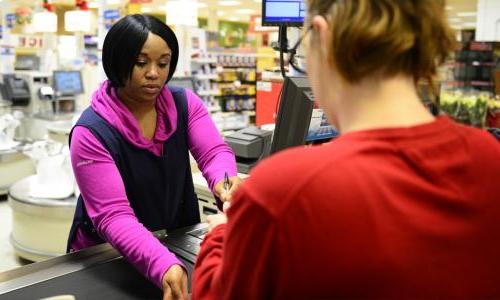Table of Contents
Federal legislation commonly known as the farm bill should really be called the food and farm bill, and the Supplemental Nutrition Assistance Program (SNAP) is one big reason why. As the largest single program funded under the food and farm bill, SNAP is the first line of defense against hunger and food insecurity for tens of millions of US households. It’s a solid investment that helps participants put food on their tables, and its benefits ripple out to entire communities. But in recent years, this cost-effective program has come under repeated attack by foes seeking to reduce or eliminate benefits for millions of low-income people.
Such legislative attacks are rooted in persistent, divisive myths about the program. In fact, there's plenty of evidence showing that SNAP's benefits cut across demographic and geographic lines, helping individuals and families in rural, urban, and suburban communities. SNAP is a program the country should be able to unite around.
A program that works
The largest nutrition safety net in the federal budget, SNAP serves more than 22 million American households. In 2021, the program lifted some 2.8 million people out of poverty.
And less food insecurity means better lives. An ever-growing body of evidence shows that SNAP delivers real, significant benefits for participants. A 2015 report by the White House Council of Economic Advisers, for example, found evidence linking SNAP participation to a broad range of positive outcomes, including:
- Improved birth weight and neonatal health
- Improved school performance
- More medical checkups and fewer hospital visits
Research has also linked SNAP with better self-reported health, better access to preventive health care, and lower health care costs.
These positive effects on the health and well-being of participating families testify to the program's value. But SNAP's benefits don't stop there.
SNAP helps rural and urban communities alike
SNAP's benefits reverberate across the entire nation, touching people of every age, race, zip code, and political persuasion. The program plays an especially vital role in the economic health of rural areas and small towns. Using the USDA’s most recent designation of “metro” (urban) and “nonmetro” (rural) counties and SNAP usage data collected by the US Census Bureau between 2017 and 2021, UCS made a surprising discovery: more than 72 percent of the top 1,000 counties by SNAP population-weighted participation were in nonmetro (rural) counties.

SNAP's economic benefits go far beyond food
SNAP not only helps participating families keep food on the table, but also creates room in household budgets for other necessities such as housing, utilities, transportation, and health care—further broadening the economic reach of the program.
This means that SNAP's economic benefits aren't confined to the food industry. They're felt across a wide range of economic sectors, from energy to manufacturing.
By improving the standard of living for millions of people, SNAP provides a vitally important economic boost, supporting hundreds of thousands of jobs. And because SNAP participation is highest in low-income areas, these positive economic impacts are reaching the communities where they're needed most.
Who are SNAP participants?
Our analysis found that less than 10 percent of SNAP participants in rural areas are able-bodied adults without dependents. As with urban participants, the vast majority are children, caregivers, seniors, or adults with disabilities.
Looking at all US SNAP households in 2020, we find that:
- 38.1 percent were households with children;
- 28.6 percent were households with elderly people; and
- 21.8 percent were households with non-elderly people with disabilities.
Making SNAP stronger in the next food and farm bill
We know that SNAP is a smart investment in the health and well-being of families, communities, and our economy. Efforts to weaken the program make no sense.
Instead, we should be taking action to reinforce SNAP's positive impacts. One way to do that is to maximize the benefits of other federal programs that expand SNAP’s reach by making nutritious, locally grown fruits and vegetables more available and affordable. Here are three good examples worth supporting:
- The Gus Schumacher Nutrition Incentive Program (GusNIP) expands access to fresh produce by providing incentives for the purchase of fresh, local produce with SNAP dollars. It supports local organizations like farmers markets by providing a match for each SNAP dollar spent at the participating markets. The value of SNAP benefits is thus effectively doubled at those markets. GusNIP improves food insecurity but also nutrition, as those who use it eat more fruits and vegetables than other US consumers. Each GusNIP dollar spent also generates about two dollars in the local community. However, because GusNIP funding is not allotted directly to SNAP participants but to a limited number of organizations and businesses, it is not available everywhere and the funding can run out. In the next food and farm bill, GusNIP funding should be expanded to reach more SNAP households.
- The Healthy Food Financing Initiative (HFFI) offers grants and loans to help establish or expand locally owned healthy-food retail outlets in underserved areas. In recent years, approximately half of its grants have been in rural areas. But HFFI is a small program: in 2021, it awarded about $22 million across 134 projects, with only 47 percent of all applicants receiving funding.
- The Local Agriculture Market Program (LAMP) is actually a collection of programs that invest in local and regional food infrastructure, including farmers markets, food hubs, and co-ops. Many of its investments are in areas with low access to fresh produce, with new markets striving to make fruits and vegetables more affordable. And LAMP programs accomplish what they set out to do: according to a 2014 evaluation, nearly $15 million in awards enabled new markets to reach more than 3.5 million producers and consumers, and local economies saw $2.67 in benefits for every dollar invested.




